







 |
||||||
 |
 |
 |
 |
 |
 |
 |
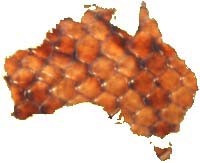
| About: The pygmy
python has the notable distinction of being
the smallest python in the world. These
diminutive snakes max out around 2 ft in
length. They are very calm and gentle
snakes, rarely showing any aggressive
behavior. They do have a healthy feeding
response, though. Range: These pythons are endemic to Western Australia and are found in the Pilbara, Midwest and Gascoyne regions. I have found these snakes on the road at night near the towns of Karratha and Pannawonica. Habitat: These pythons are nicely adapted to the harsh deserts of inland and coastal WA. Another name for these pythons is the Anthill python in reference to their frequent use of termite mounds for refuge. They inhabit the red soil, rocky deserts of the Pilbara. Natural History Notes: As with the other members of the genus, this species feeds on lizards as juveniles. One difficult aspect of keeping these snakes in captivity is their desire as juveniles for lizard prey. Once they begin feeding on rodents they do not look back and will be great feeders. Adults in the wild will generally feed on the abundant reptilian prey and they would probably be considered a lizard specialist. Pygmy pythons are also sympatric in range with the Western Stimson's python (Antaresia stimsoni stimsoni). These snakes can be found in the same areas, and this sympatry with a closely related species may have contributed to the small size and lizard specialization of the pygmy python. Although similar in appearance, the pygmy python has a more faded pattern, although color and pattern will vary between locality. These snakes have small clutches of eggs, around 2-4, in the wild. Like other pythons, they will maternally incubate the eggs until hatching. Juvenile pygmy pythons are very small, but posess a typical python personality. General Notes: These are a very rewarding species to keep. They are very easy to keep and breed and only present a challenge in the juvenile feeding department. A single morph, the pearl pygmy python, has been produced. It is almost white in appearance and appears to be passed on as a simple recessive trait. There are various appearances, but most pygmy pythons in the US are from 2 bloodlines. We work with both bloodlines at AAR. |
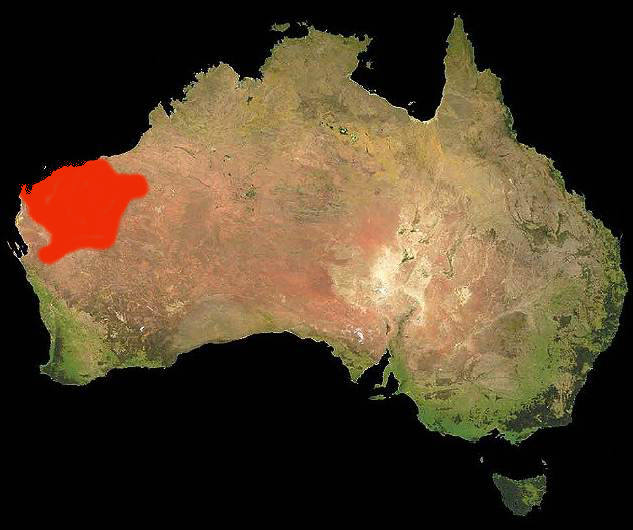 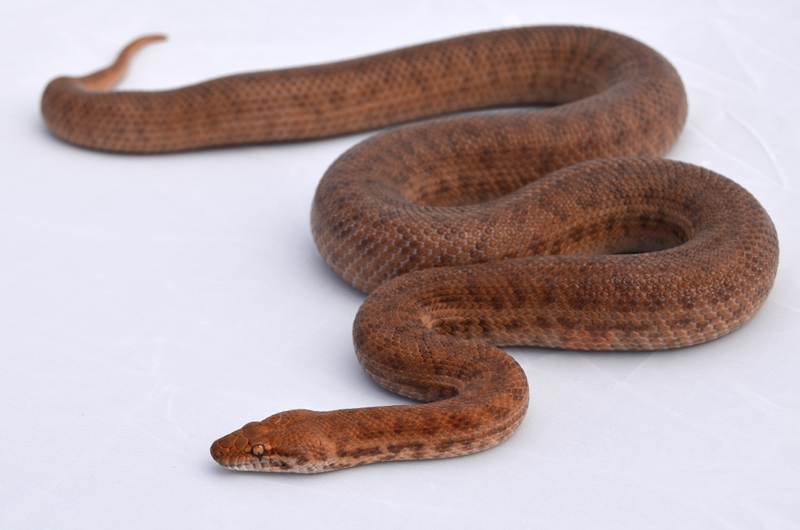
Female Pygmy
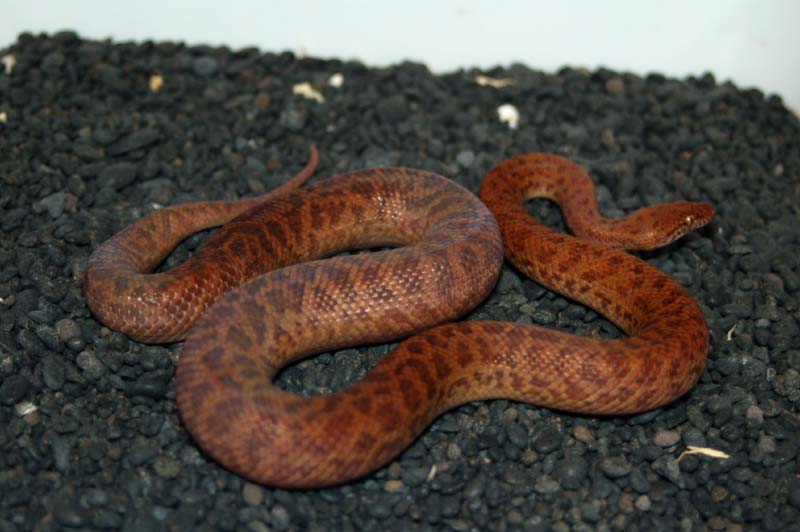
A more heavily patterned male pygmy python
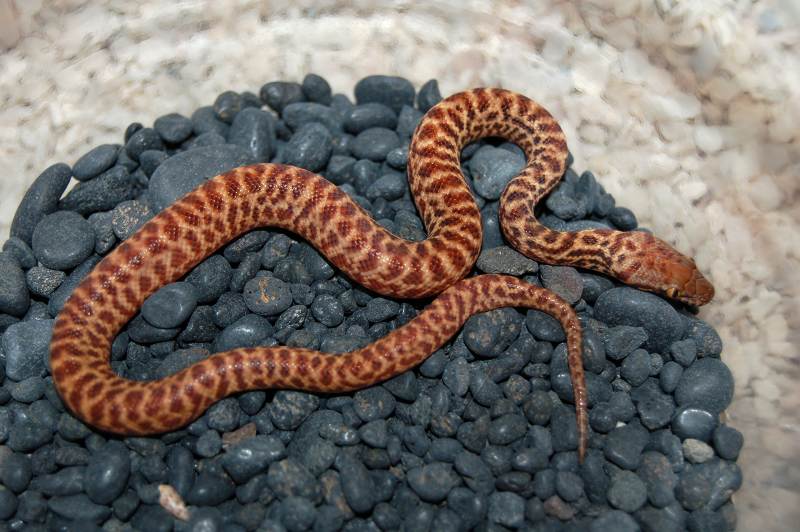
Nicely patterned juvenile pygmy
|
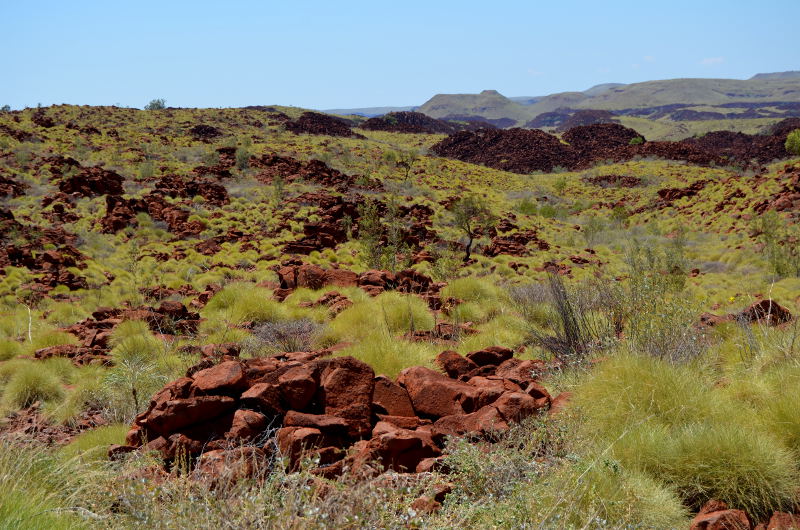 Habitat of the pygmy python
in the Pilbara
|
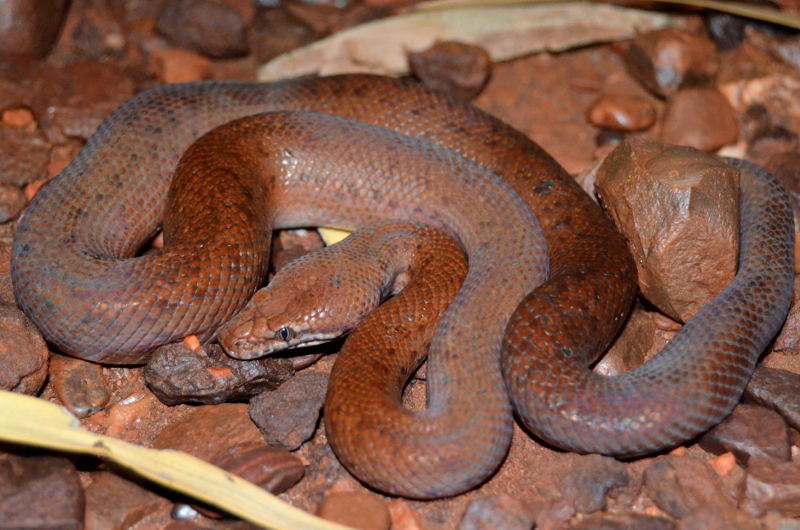
The pattern tends to fade
with age. This wild individual is almost
patternless
|